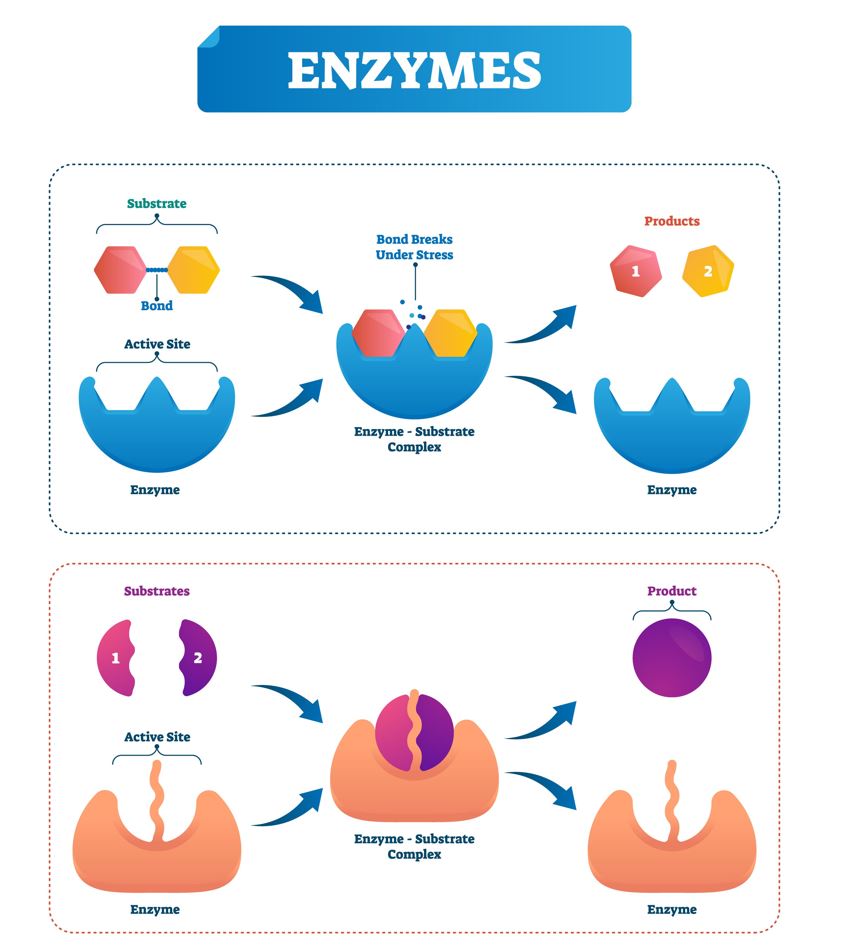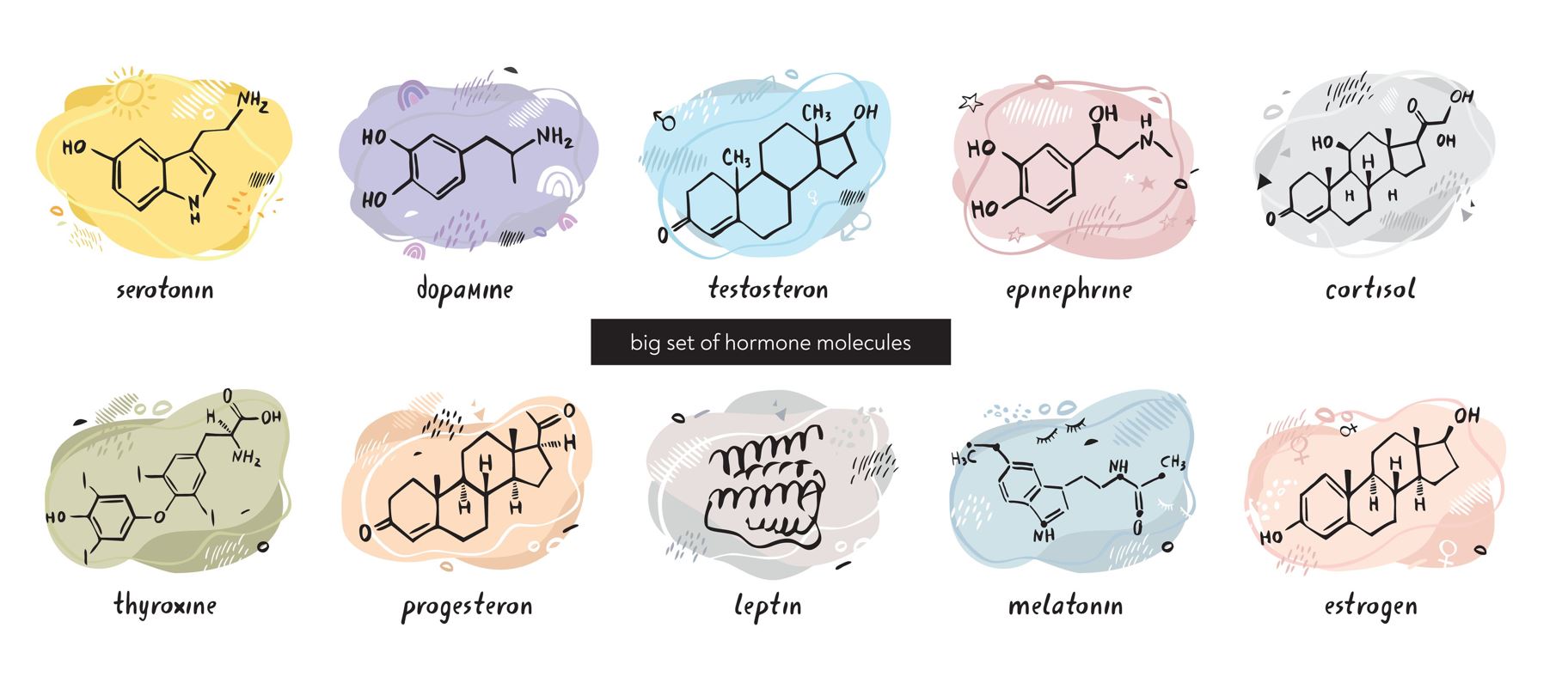Enzymes and hormones are both substances that play an essential role in the body. Enzymes are proteins that catalyze chemical reactions in the body, while hormones are chemical messengers that help to regulate various bodily functions. Both enzymes and hormones are essential for good health, but they differ in crucial ways.
Enzymes are produced by all cells in the body, while hormones are only produced by certain endocrine cells. Enzymes are generally larger molecules than hormones, and they typically have a shorter lifespan. Finally, enzymes can be used to break down substances in the body, while hormones typically work by stimulating or inhibiting specific processes. Though they have some similarities, enzymes and hormones ultimately serve different purposes in the body.
What are enzymes
Enzymes are proteins that act as catalysts in chemical reactions. In other words, they speed up the rate of a reaction without being used up in the process. Enzymes are found in all living cells and perform various tasks, from digesting food to repairing DNA.
Most enzymes are specific to a particular reaction and require a particular environment, or “microenvironment,” in order to function properly. This microenvironment includes factors such as temperature, pH, and the presence of other molecules known as cofactors or coenzymes. The site of action is the specific region of an enzyme molecule that binds to the substrate (the molecule upon which the enzyme acts).

The binding of substrate to enzyme is known as the “active site.” The active site is usually a deep pocket or groove on the surface of the protein molecule, and its shape is perfectly complementary to that of the substrate.
This specific binding allows the active site to concentrate the substrate molecules and brings them into close proximity to each other to react more efficiently. In most cases, only a small number of enzymes are necessary to catalyze a reaction because each enzyme can catalyze thousands or even millions of reactions before it needs to be replaced.
What are hormones
Hormones are substances that are produced by the endocrine glands. They are responsible for regulating the body’s metabolism, growth and development, and reproductive processes. There are two main types of hormones: steroid hormones and proteins/peptides.
Steroid hormones are derived from cholesterol and include testosterone, estrogen, and progesterone. These hormones are lipid-soluble and can easily pass through cell membranes. Once inside the cells, they bind to specific receptors on the DNA and regulate gene expression.
Proteins and peptides include insulin, glucagon, and growth hormone. These hormones are water-soluble and cannot cross cell membranes. They bind to specific receptors on the surface of cells and activate second messenger molecules that cause changes in cell activity.
Hormones play a vital role in the body’s metabolism. They help to regulate the body’s use of energy and nutrients, and they also play a role in growth and development. Hormones are also responsible for the body’s response to stress, and they help to regulate the reproductive system.
There are many different hormones that are involved in metabolism, and each one has a specific function. For example, insulin is a hormone that helps to regulate blood sugar levels. Glucagon is a hormone that helps to break down glycogen (a storage form of glucose) so that it can be used for energy. Growth hormone helps to stimulate cell growth and division. And cortisol is a hormone that helps to regulate the body’s response to stress.
Each hormone has a specific role in metabolism, and when one or more of these hormones is not functioning properly, it can lead to problems with metabolism. For example, if insulin levels are too high or too low, it can cause problems with blood sugar regulation. Moreover, if cortisol levels are too high, it can lead to weight gain, high blood pressure, and other health problems.
Comparison of enzymes and hormones
A comparison of various features of hormones and enzymes is categorized into their molecular structure, mechanism of action, and metabolism.
Chemical structure
Enzymes are composed of amino acids, which are arranged into a specific three-dimensional shape. This shape allows enzymes to bind to their substrates, the molecules that they act on. The binding of an enzyme to its substrate is like fitting a key into a lock; it allows the reaction to occur more quickly and efficiently. Enzymes can be found in all parts of the body, from the stomach to the liver to the muscles. They play a vital role in keeping the body functioning properly.

Hormones are generally classified based on their structure. There are three main types of hormones: steroids, peptides, and amines. Steroid hormones, such as testosterone and estrogen, are derived from cholesterol and are lipid-soluble, meaning they can easily cross cell membranes. Peptide hormones, such as insulin and growth hormone, are composed of chains of amino acids and are water-soluble. Amines, such as norepinephrine and dopamine, are derived from amino acids but have an ammonium group attached.
Molecular weight
The molecular weight of a hormone can vary depending on the specific type of hormone. For example, the hormone testosterone has a molecular weight of 288 daltons, while the hormone estrogen has a molecular weight of 272 daltons.
Hormones are typically transported through the bloodstream to their target tissues, where they bind to specific receptors and trigger a variety of biological responses. The molecular weight of a hormone can influence how easily it is transported through the bloodstream and how well it binds to receptors.
Enzymes are typically much larger than the molecules they act on, and their size varies depending on the enzyme’s function. The molecular weight of enzymes can range from 12,000 to 1 million daltons. Most enzymes are composed of several subunits, and each subunit has a specific function. The active site of an enzyme is where the substrate binds and the chemical reaction takes place. Enzymes are classified based on the type of reaction they catalyze, such as oxidoreductases, transferases, hydrolases, lyases, isomerases, and ligases.
Site of action
Hormones are chemicals that are produced by the body to regulate various physiological processes. They are released into the bloodstream and travel to target cells, where they bind to specific receptors. This binding triggers a response within the cell, which can range from changing the rate of gene expression to activating cell signaling pathways.
Hormones can be classed according to their structure, with steroid hormones being derived from cholesterol and amino acid-based hormones being derived from proteins. The site of action of a hormone depends on its structure; for example, steroid hormones are able to pass through the plasma membrane and bind to receptors inside the cell, whereas amino acid-based hormones must bind to receptors on the surface of the cell. Regardless of their structure, all hormones exert their effects via specific interactions with target cells.
Enzymes are complex proteins that catalyze chemical reactions in the body. Each enzyme is specific to a particular reaction and is In order for an enzyme to work, it must bind to a substrate—the molecule on which it will act. The substrate fits into the active site of the enzyme, like a key into a lock, and the reaction takes place. Once the reaction is complete, the product is released and the enzyme is free to bind to another substrate. Enzymes can be found in all tissues and organs of the body, and they play a vital role in many biochemical pathways. Without enzymes, these pathways would proceed too slowly to be of any use to the organism.
Synthesis
The synthesis of hormones takes place in the endocrine glands, which produce and release hormones into the bloodstream. The hypothalamus is responsible for regulating the endocrine system, and it does so by releasing hormones that either stimulate or inhibit the release of other hormones. This elaborate system ensures that the levels of hormones in the body are kept within a normal range, allowing the body to function properly.
The synthesis of enzymes involves a complex process that begins in the ribosomes. First, the DNA is transcribed into mRNA. The mRNA then travels to the ribosomes, where it is translated into amino acids. These amino acids then fold into a three-dimensional structure, which determines the enzyme’s function. Finally, the enzymes are transported to their specific location in the cell, where they catalyze chemical reactions.
Without proper synthesis, enzymes would be unable to function properly, leading to many problems in the body. Therefore, understanding the synthesis of enzymes is essential for maintaining health.
Fields of study
Enzymology is the study of enzymes and their role in chemical reactions. Enzymes are proteins that catalyze, or speed up, chemical reactions in the body. Enzymology is a branch of biochemistry that focuses on understanding how enzymes work and what they do.
Enzymes are involved in nearly all biochemical reactions, including those that occur in the digestion of food, the metabolism of drugs, and the synthesis of DNA. Enzymology is a critical tool in understanding how these reactions occur and how they can be regulated.
Enzymology also has important applications in medicine, as enzymes can be used to treat diseases and disorders. In addition, enzymes are used in many industrial processes, such as the production of food and pharmaceuticals. The field of enzymology is constantly evolving as new discoveries are made about the role of enzymes in chemical reactions.
Endocrinology on the other hand is the study of the endocrine system, which consists of a network of glands that secrete hormones into the bloodstream. These hormones play an essential role in regulating metabolism, growth, and development. Endocrinologists often work with patients who have hormone-related conditions such as diabetes, thyroid disorders, and obesity. In addition to diagnosing and treating these conditions, endocrinologists also conduct research to improve our understanding of how hormones work.
References
- Robinson PK. Enzymes: principles and biotechnological applications [published correction appears in Essays Biochem. 2015;59:75]. Essays Biochem. 2015;59:1-41.
- Stárka L, Dušková M. What is a hormone? Physiol Res. 2020 Sep 30;69(Suppl 2):S183-S185.
Images(s) Courtesy
MyEndoConsult
Kindly Let Us Know If This Was helpful? Thank You!


